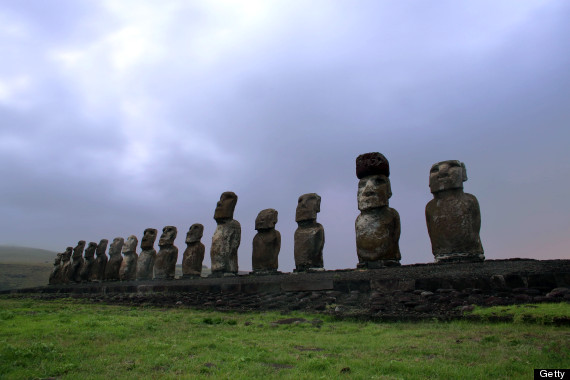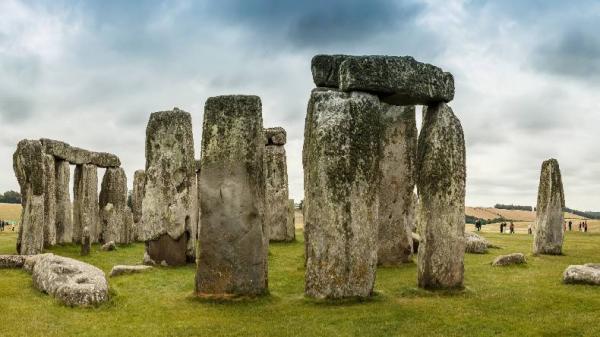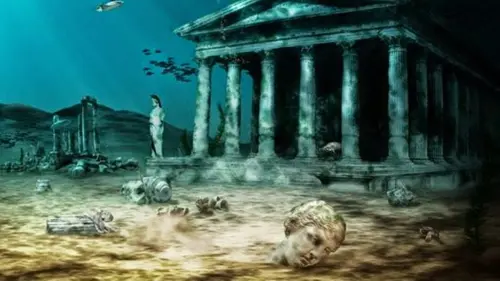Mystery Of The World – Ancient history is flush with unsolved mysteries, some of which, from lost burial sites to sunken cities, have captivated the public imagination for centuries.
“People are fascinated by origins, people are fascinated by mysteries,” says Andrea M. Berlin, a professor of archeology at Boston University. “We’re very curious about what we can’t see, about what came before.”
And though some mysteries will likely never be solved, others are being chipped away at with the help of new technologies. As Berlin points out, a present-day archeologist who finds a clay pellet may use an atomic reactor, among other tools, to deduce its chemical composition, whereas a 19th-century archeologist would have relied on a mere pickaxe and wheelbarrow.
“Every single new technology that has been made available to archeologists, beginning with carbon-14 dating in the 1950s, has radically pushed the field,” Berlin says. “We can see deeper and smaller and finer, and so there are many more questions we can ask and answer.”
She adds: “We have learned a lot about how sophisticated many ancient sites were.”
In Berlin’s experience, professional archeologists tend to eschew the role of popular sleuth, especially as it pertains to things like Noah’s Ark and treasure-laden tombs. Nevertheless, she recognizes the sense of wonder such mysteries inspire.
“We’re a present and future-oriented society these days,” Berlin says, “so from my point of view, anyone who cares at all, even a little bit, about the past, that’s great.”
Here are 10 of the ancient world’s most perplexing and enduring mysteries, all worthy of a glance back in time:
1. Thonis-Heracleion
An Egyptian port city on the Mediterranean Sea, Thonis-Heracleion served as a major trading hub prior to the founding of nearby Alexandria around 331 B.C. Mythical hero Heracles and Helen of Troy both supposedly spent time there. Around the second century B.C., however, the city center collapsed due to soil liquification, possibly triggered by earthquakes, tsunamis, or floods. Eventually, all of Thonis-Heracleion sank underwater, where it remained lost to time until being rediscovered in the early 2000s by marine archeologists. Since then, large statues, animal sarcophagi, temple ruins, pottery shards, jewelry, coins, and even 2,400-year-old fruit baskets have been pulled from the waves, thus shining new light on this real-life Atlantis.
2. Plain of Jars
Thousands of lichen-covered stone jars from the Iron Age, some standing close to 10 feet tall and weighing several tons, dot the mountainous landscape of northern Laos. Carved largely from sandstone and found in groups ranging from just one to 400, legend holds that giants used them as wine glasses. Many archeologists, on the other hand, believe they served as funerary urns, though much remains unknown about their purpose, about how they were moved into place, and about the civilization that produced them. Recent research dates at least some of the stone jars to as early as 1240 B.C., which would make them far older than the human remains buried nearby. Complicating matters is that many of the jars stand in fields of unexploded munitions, the vestige of a massive U.S. bombing campaign during the Vietnam War, and therefore cannot be safely studied.
3. Guanabara Bay
Acting on a tip from locals, controversial shipwreck explorer Robert Marx claimed in 1982 to have discovered a number of twin-handled Roman vases, known as amphoras, in Brazil’s Guanabara Bay. According to Marx, the barnacle-covered amphoras provided proof that the Romans were the first Europeans in Brazil, having pre-dated the Portuguese by over 1,000 years. However, he was never able to fully explore the site, as the Brazilian government banned him from the country for alleged looting and halted underwater exploration altogether. Marx responded by accusing Brazil’s Navy of dumping sediment on the amphoras so as not to have to re-write history. To this day, a Roman presence on Brazil’s coast remains highly unproven.
4. Nazca Lines

Roughly 2,000 years ago, a pre-Inca civilization etched a series of enormous drawings into the dry coastal plain of Peru. Known as the Nazca Lines, these geoglyphs remained largely unknown until aircraft began flying over the area in the 1930s. To date, well over 1,000 designs have been located: Most are straight lines, stretching up to 30 miles, or geometric shapes, from trapezoids to spirals, while others depict animals and plants, including a spider, a hummingbird, a monkey, a whale, a two-headed snake, a dog, and a humanoid figure nicknamed “The Astronaut.” As recently as 2022, 168 new geoglyphs were discovered, yet researchers still don’t understand their purpose. One prominent hypothesis associates them with water rituals, though other guesses abound as well.
5. Paracas Candelabra

To the northwest of the Nazca Lines, carved into a hillside overlooking Peru’s Pisco Bay, lies the Paracas Candelabra, another massive geoglyph that stretches some 600 feet from top to bottom. Though pottery found at the site has been dated to around 200 B.C., no one knows the age of the candelabra itself. Its raison d’être remains equally fuzzy. One theory holds that it served as a navigational tool for sailors, whereas another claims it depicted the creator god’s trident.
6. Sacsayhuamán
Elsewhere in Peru, just outside Cuzco, stands the remains of the Sacsayhuamán fortress, which was painstakingly constructed by the Incas in the 1400s. Much like at Machu Picchu, Inca laborers somehow moved enormous rocks into place—some of which weighed 125 tons or more—before masons cut them, using only bronze and stone tools, and fitted them together without mortar. Though Spanish colonizers dismantled much of the site for building materials, Sacsayhuamán has remained structurally sound enough to withstand large earthquakes and other ravages of time.
7. Cleopatra‘s Tomb
For an ancient ruler, much is known about Cleopatra VII, the so-called last queen of Egypt, who famously consorted with both Julius Caesar and Mark Antony and later committed suicide in 30 B.C. following Antony’s and her defeat at the Battle of Actium. Yet the location of Antony’s and her tomb—the couple were purportedly buried together—remains a complete mystery. Some researchers believe it resided in Alexandria, her capital city and the one-time cultural center of the Mediterranean world, only to be lost when a tsunami swept through in 365 A.D. Others suspect elsewhere in the Nile Delta, possibly in a temple dedicated to Isis and Osiris, the gods with which Cleopatra and Antony respectively associated themselves. In addition to Cleopatra’s, other legendary lost burial sites include those of Alexander the Great and Genghis Khan.
8. Voynich Manuscript
In 1912, rare book dealer Wilfrid Voynich acquired a medieval manuscript that he claimed had been housed in “an ancient castle in southern Europe.” Written in an extinct language, or code, no one could recognize and filled with strange illustrations of fictitious plants and naked women, it has befuddled scholars ever since, including Alan Turing and the FBI, both of whom tried and failed to crack the case. Over the years, several people have professed to decipher it, but each time have been greeted with a massive chorus of doubts. Some suspect the whole thing is an elaborate hoax. Now housed at Yale University, the Voynich manuscript is available to the public for anyone interested in trying to solve the puzzle once and for all.
9. Yonaguni Monument

Off the coast of Japan’s Yonaguni Island lies an underwater rock structure, at least 165 feet long and 65 feet wide, that resembles a manmade step pyramid. Discovered in the 1980s and now known as the Yonaguni Monument, it is believed by some researchers to be the ruins of an ancient civilization. Many other researchers, however, contend that “Japan’s Atlantis” is nothing more than a curious natural phenomenon shaped by tectonic uplift and ocean currents.
10. Stonehenge

Construction of Stonehenge, one of the world’s most iconic prehistoric landmarks, began some 5,000 years ago, before England even entered the Bronze Age. Well studied for centuries, most researchers agree it functioned as a burial site—and it’s now known where the massive stones came from. Yet Stonehenge’s other secrets remain stubbornly elusive, involving its possible religious, ceremonial, astronomical, and therapeutic significance.






